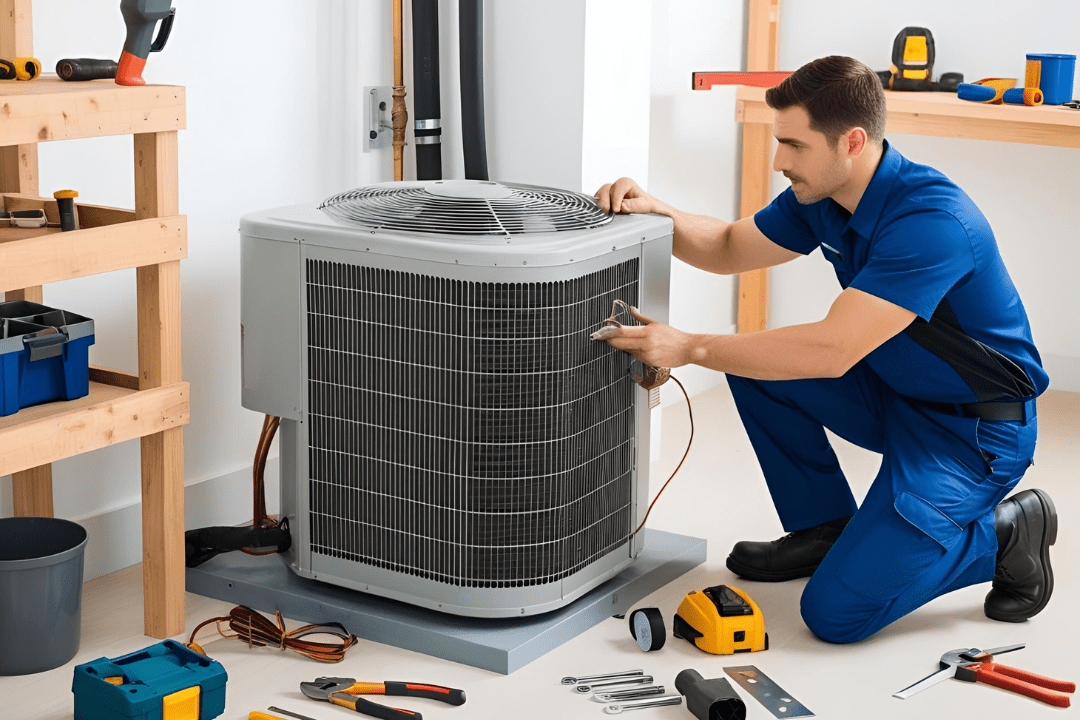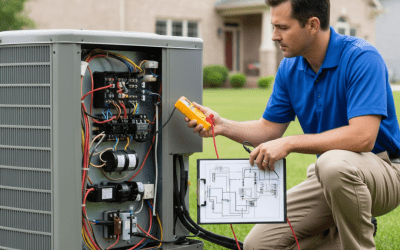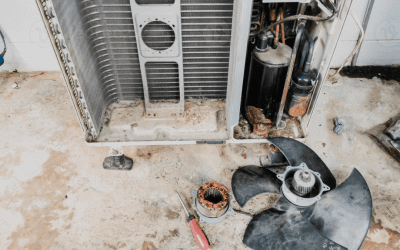HVAC is prone to experience wear and tear as well as other mechanical problems. While some problems are quick and inexpensive to fix, others can be far more complex and costly. In certain cases, your HVAC system may even require full replacement, which can put a serious dent in your wallet. You’d be shocked to know that according to a report in Home Advisor, major HVAC issues, like compressor failures or refrigerant leaks, can cost between $1,200 and $3,500, while a full system replacement might exceed $7,000. The good news? You can avoid these HVAC repair costs and extend your system’s lifespan by taking some precautionary measures.
Want to know how? In this guide, we’ll explore the most costly HVAC Repairs, what causes them, and, most importantly, how you can avoid these wallet-draining problems. Let’s take a look into the details!
Most Common Costly HVAC Repairs And How To Prevent Them
You know, that magical thing keeping your home cool in the summer and cozy in the winter: HVAC. But when something goes wrong… ouch! The AC repair bills can hit hard. So, here are the most common costly HVAC repairs and, more importantly, tips to maintain your HVAC without breaking a sweat.
Compressor Failure ($1,200–$4,800+)
Why It Happens
- Low Refrigerant Levels: Low refrigerant levels make the compressor work harder to maintain the desired temperature, which can lead to overheating and eventual failure.
- Dirty Coils: When the coils are dirty, the compressor must run longer to remove heat from the refrigerant, adding strain to the system.
- Electrical Failures: Faulty capacitors, relays, or wiring can prevent the compressor from operating efficiently.
- Lack of Lubrication: Over time, the moving parts inside the compressor can wear out without sufficient lubrication, increasing the likelihood of failure.
How to Prevent It
- Schedule bi-annual maintenance to inspect refrigerant levels, coils, and electrical components.
- Clean or replace the air filters every 1–3 months to maintain proper airflow and avoid coil buildup.
- Protect the system from power surges by installing a surge protector to prevent damage to the compressor.
Refrigerant Leaks ($500–$2,500 Depending on Extent)
Why It Happens
- Corrosion of Copper Tubing: Formic acid, often emitted by household products like cleaners and paints, reacts with moisture to form pinhole leaks in copper tubing, gradually reducing system efficiency and causing refrigerant loss.
- Improper Installation: Incorrect brazing techniques during installation can create weak joints and poor connections in refrigerant lines, leading to gradual leaks that compromise the system’s cooling performance
- Vibration and Wear: Continuous vibration from HVAC components, especially compressors and fans, can loosen fittings and weaken connections over time, causing refrigerant leaks.
How to Prevent It
- Inspect the system annually for signs of refrigerant leaks, especially around the evaporator coil and connections. This proactive approach is a key step in how to prevent HVAC problems and extend the lifespan of your system.
- Ensure the system is properly charged during installation or after servicing, as overcharging or undercharging can lead to damage.
- Use corrosion-resistant coatings on copper tubing to protect against environmental factors and reduce HVAC repair costs.
Avoid the most expensive HVAC breakdowns. Prevent problems with regular maintenance with us.
Blower Motor Malfunctions ($500–$2,800)
Why It Happens
- Clogged Air Filters: When airflow is restricted, the blower motor works harder, leading to overheating and failure.
- Electrical Component Failure: Worn-out capacitors or faulty relays can stop the motor from functioning properly.
- Lack of Lubrication: Blower motors, especially in older systems, require regular lubrication to reduce wear.
How to Prevent It
- Replace filters every 1–3 months to ensure unrestricted airflow.
- Schedule a professional tune-up annually to check the blower motor, capacitors, and relays.
- Listen for unusual noises like rattling or grinding, which could be due to motor trouble and are a sign your HVAC needs repair.
Evaporator Coil Replacement ($1200–$4,000 Depending on Unit Size)
Why It Happens
- Corrosion from VOCs: Volatile organic compounds (VOCs) in cleaning products and household chemicals can corrode the coils over time.
- Dirty Air Filters: Clogged filters allow dirt and grime to build up on the coils, reducing efficiency and accelerating wear, leading to costly HVAC Repairs.
- Moisture and Freeze/Thaw Cycles: Low refrigerant levels can cause the coils to freeze and thaw repeatedly, weakening the metal, a prime reason why HVAC maintenance is necessary.
How to Prevent It
- Schedule a coil cleaning every 12–18 months to remove built-up grime and extend coil life.
- Monitor refrigerant levels during maintenance to prevent freezing and thawing cycles that damage the coils.
Electrical Control Failures ($150–$1750 Depending on the Component)
Why It Happens
- Power Surges: Sudden voltage spikes, especially in areas like San Antonio, Texas, and nearby regions, can damage the control board, capacitors, and other electrical components.
- Moisture and Corrosion: Outdoor units such as central air conditioners, heat pumps, and mini-split systems are exposed to moisture, which can corrode wiring and electrical connections.
- Wear and Tear: Over time, electrical components such as relays and contactors can wear out and lead to malfunctions.
How to Prevent It
- Install a surge protector during HVAC repair in San Antonio and Texas to shield the system from voltage spikes.
- Inspect electrical components annually to identify loose connections, corrosion, or fraying.
- Ensuring tight seals around panels and conduit openings prevents rain and humidity from entering the unit, reducing the risk of electrical corrosion, component failure, and expensive repairs over time.
Thermostat Malfunctions ($150–$1000 Depending on Type)
Why It Happens
- Poor Calibration: Thermostats that are not calibrated correctly can cause the HVAC system to cycle improperly.
- Battery Failures: Dead or low batteries can cause the thermostat to lose its settings.
- Outdated Thermostats: Older models may not be compatible with modern HVAC systems, leading to erratic operation. This is a key factor to keep in mind when considering how to choose the right HVAC system for your home.
How to Prevent It
- Upgrade to a smart thermostat for more accurate temperature control and efficiency.
- Check and replace batteries annually to ensure reliable performance.
- Verify that the thermostat is located away from heat sources and direct sunlight to prevent false readings.
Wrapping Up
With the most frequently occurring problems covered, we’ve also included an overview of how much HVAC maintenance costs to help you stay prepared and avoid unexpected expenses. By investing in regular maintenance, you can protect your system from these costly repairs and enjoy year-round comfort without breaking the bank.
Want more expert tips? Check out our blog post, “tips to maintain your HVAC system in Texas weather,” for practical advice that keeps your system running smoothly. Ready to schedule professional HVAC maintenance? Contact Classic Services Air Conditioning & Heating today at (830) 358-1499 and keep your system in top shape year-round! Our expert technicians are ready to identify potential issues before they become costly problems, saving you time, money, and stress.






